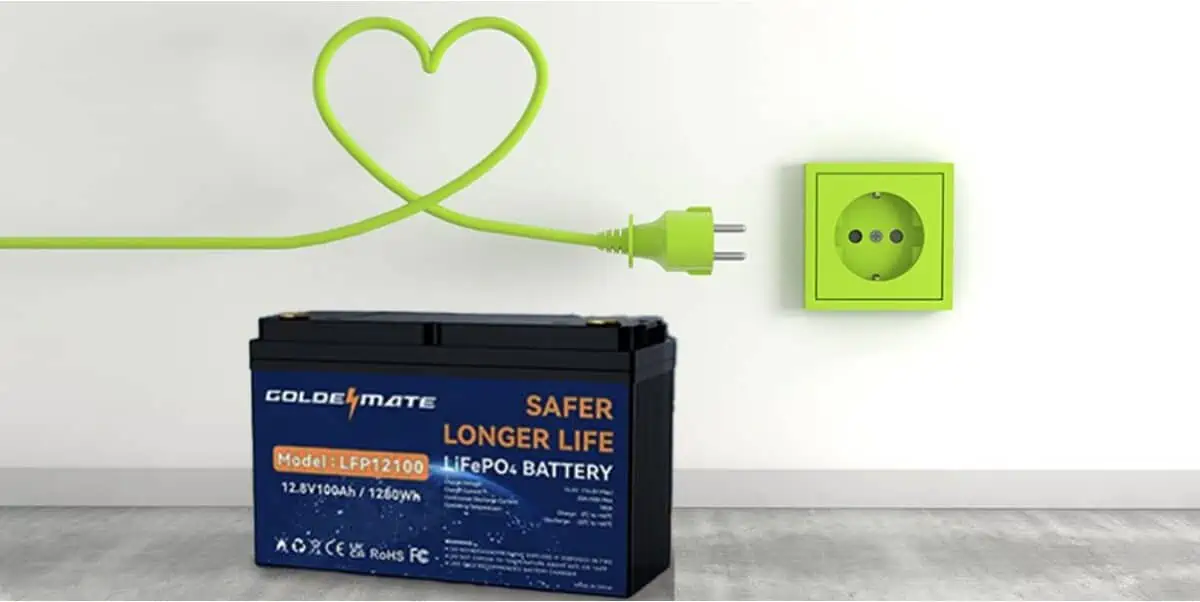In an increasingly connected and digitized world, lithium-ion batteries have become the backbone of modern technology. They power our smartphones, laptops, electric vehicles, and even provide energy storage solutions for renewable energy sources.
The longevity of the lithium battery is a topic of great importance, as it directly impacts not only the performance of our devices but also environmental sustainability and economic efficiency.
This article delves into the crucial role of over-discharge protection in extending the lifespan of lithium batteries.
Understanding Lithium Batteries
Basics of Lithium-ion Batteries
Before we delve into the significance of over-discharge protection, it’s essential to understand the basics of lithium-ion batteries. These batteries are renowned for their high energy density, making them ideal for various applications.
A lithium-ion battery consists of an anode, a cathode, and an electrolyte. During discharge, lithium ions move from the anode to the cathode through the electrolyte, generating electrical energy.
Factors Affecting Lithium Battery Lifespan
The lifespan of a lithium battery is influenced by various factors, one of the most critical being the Depth of Discharge (DoD). DoD refers to the extent to which a battery is discharged before it’s recharged. Deeper discharges typically result in a shorter battery lifespan. Additionally, over-discharge can have severe consequences for the battery’s health.
Over-discharge Protection Mechanisms
Voltage Cutoff
One primary mechanism for protecting lithium batteries from over-discharge is the voltage cutoff. This involves setting a lower voltage limit below which the battery should not be discharged. When the battery voltage approaches this limit, the device or the battery management system (BMS) takes action to prevent further discharge.
This mechanism is highly effective in preserving battery health. When choosing a battery for your solar energy storage system, consider the advantages of a high-capacity option like the 100Ah lithium battery.
Battery Management Systems (BMS)
Battery Management Systems play a pivotal role in monitoring and protecting lithium-ion batteries. These systems constantly monitor the state of the battery, including voltage, temperature, and current. When the voltage approaches the critical lower limit, the BMS can trigger protective actions such as disconnecting the battery from the load.
Additionally, BMS helps balance the charge and discharge of individual cells within a battery pack, ensuring uniform discharge and preventing over-discharge in specific cells.
Protection Circuits
Many lithium-ion batteries also incorporate protection circuits, which are integrated into the battery pack. These circuits include various components such as fuses, switches, and control electronics.
Their purpose is to detect over-discharge conditions and take corrective actions, such as disconnecting the battery from the device. Protection circuits are particularly crucial in larger battery packs used in applications like electric vehicles.
The Consequences of Over-Discharge
Capacity Loss
One of the most significant consequences of over-discharge is irreversible damage to the battery’s anode. When a lithium-ion battery is over-discharged, the anode can become plated with metallic lithium, causing physical and chemical changes that reduce the battery’s capacity. This capacity loss is often permanent and leads to reduced runtimes and overall battery performance.
Safety Risks
Over-discharge can also pose significant safety risks. In extreme cases, it can lead to thermal runaway, a condition where the battery’s internal temperature rises uncontrollably. This can result in the release of hazardous gases, fires, and even explosions. Such safety incidents not only endanger lives but also damage property and the environment.
Economic Implications
From an economic perspective, over-discharge can be costly. Batteries with reduced capacity due to over-discharge need to be replaced more frequently, increasing the overall cost of ownership.
Moreover, the disposal of spent batteries raises environmental concerns, as lithium-ion batteries contain hazardous materials that can pollute landfills if not properly handled.
Case Studies
Real-World Examples of Lithium Battery Failures
To emphasize the importance of over-discharge protection, let’s look at some real-world examples of lithium battery failures attributed to over-discharge. In the realm of consumer electronics, smartphones and laptops are notorious for experiencing battery issues due to deep discharges. Users often report rapid battery degradation and reduced runtimes after subjecting their devices to repeated over-discharge cycles.
In the automotive industry, electric vehicles (EVs) have also faced challenges related to battery over-discharge. While modern EVs are equipped with advanced battery management systems and protection mechanisms, early electric car models experienced issues where over-discharge could lead to battery damage, reducing the vehicle’s range and overall performance.
Success Stories of Over-Discharge Protection
On the flip side, there are numerous success stories showcasing how over-discharge protection has prevented battery failures. Many smartphones and laptops now come with built-in voltage cutoff mechanisms, preventing users from deep-discharging their batteries unintentionally. This simple feature has significantly extended the lifespan of these devices and improved user satisfaction.
Electric vehicles, with their complex battery packs, rely heavily on battery management systems and protection circuits. These systems continuously monitor the state of the battery and take preventive measures to avoid over-discharge. As a result, modern EVs enjoy longer battery lifespans, increased driving ranges, and improved safety.

Best Practices for Extending Lithium Battery Lifespan
Proper Battery Management
To extend the lifespan of lithium-ion batteries, it’s essential to practice proper battery management. Avoid deep discharges whenever possible and recharge your devices before they reach critically low battery levels. Regularly charging your devices when they are between 20% and 80% capacity can significantly increase battery longevity.
Choosing Quality Batteries
Selecting high-quality batteries with built-in protection mechanisms is another key practice for ensuring longer battery life. Reputable manufacturers often invest in research and development to create batteries that are not only energy-dense but also robust and safe, with advanced protection features.
Storing Batteries Correctly
If you have spare lithium-ion batteries or devices with non-removable batteries that you’re not using for an extended period, store them properly. Batteries should be kept in a cool, dry place at around 50% charge. Avoid exposing them to extreme temperatures, as both high heat and cold can negatively impact battery health.
Future Trends and Innovations
Advancements in Over-Discharge Protection Technology
As technology evolves, so do the protection mechanisms for lithium-ion batteries. Researchers and manufacturers are continually working on innovations to enhance over-discharge protection. This includes developing more accurate voltage cutoff thresholds, improving battery management systems, and creating smarter protection circuits.
Sustainable Battery Design
Sustainability is a growing concern, and it’s influencing the design of lithium-ion batteries. Future batteries are expected to be more eco-friendly, with reduced reliance on rare and hazardous materials. Sustainable battery design also includes features to enhance longevity, reducing the frequency of battery replacements and their environmental impact.
Integration of Lithium Batteries in Renewable Energy Systems
Lithium-ion batteries are increasingly being integrated into renewable energy systems such as solar and wind power. These batteries store excess energy generated during periods of high production and release it when needed.
To ensure the long-term viability of these systems, effective over-discharge protection is critical, as it prevents damage to the energy storage components and extends their useful life.
Conclusion
In the fast-paced, technology-driven world we live in, lithium-ion batteries are the unsung heroes that power our daily lives. However, their performance and lifespan are not guaranteed, and responsible usage and protection mechanisms are essential for maximizing their longevity.
Over-discharge protection stands out as a pivotal element in preserving lithium battery health, preventing capacity loss, mitigating safety risks, and reducing economic and environmental impacts.
By understanding the role of over-discharge protection and adhering to best practices, we can ensure that our lithium-ion batteries serve us well, both today and in the sustainable future.

